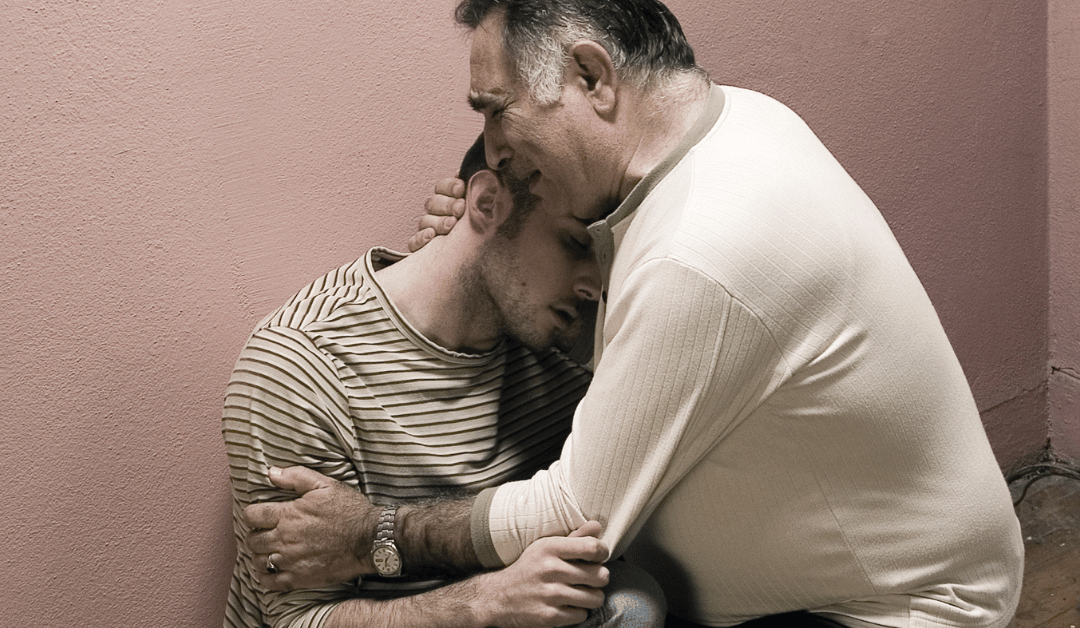So, Hazelden Betty Ford’s study was a two year study conducted using thousands of phone interviews with patients across residential treatment, virtual treatment, and intensive outpatient services.
They asked questions about abstinence, quality of life, and commitment to Twelve Step programming or similar peer support groups. And by the way, I’ve included a link to the study in the notes episode.
Of course, the most prominent aspect of the study is the abstinence rates, which makes sense, it’s the thing most people care about. So we’ll take a close look at those.
Hazelden organized the outcomes by the treatment setting, whether it was inpatient, or virtual intensive outpatient. They also break the stats down by complete abstinence from all drugs or alcohol, and then alcohol free and drug free.
They have good reason to break down these stats these ways. When it comes to treatment setting, Most people think 30-day residential treatment is the only way to treat substance use disorders or that it’s the best way to treat them.
But that’s actually not true. And if you look at Hazelden’s stats between residential and virtual outpatient, the outpatient stats are actually slightly better than the inpatient stats.
But what this study doesn’t do is attempt to explain why. There’s no analysis here at all. And this isn’t the only area where the report lacks critical details. But the analysis is actually pretty important.
The fact that the stats are better for outpatient treatment is why most insurance providers will not pay for 30-day residential treatment unless the person has already tried outpatient patient treatment and failed. Studies do show that both inpatient and outpatient treatment have similar success rates.
But having similar success rates doesn’t mean that one will work just as well as the other for everyone. And it would be helpful to understand the advantages and disadvantages of each. And providing some analysis of these stats could certainly help that.
So I’m going to hazard an educated guess here. One advantage of outpatient treatment could be that the person with the substance use disorder is going through recovery in the same context, in the same environment, in which they currently have to live. So they don’t have to navigate what can be a challenging and risky transition back to the real world after treatment. They’ve remained in it the whole time.
But that isn’t necessarily an advantage to everyone. Some people with substance use disorders need to drastically detach, and ultimately set significant boundaries around the people and places they were living in in order to recover. And residential treatment, and perhaps sober housing afterwards, can give them the space they need that will allow them to detach and set essential boundaries that will support their recovery moving forward.
Those are not the only possibilities by any means, but I throw those out there because it highlights the importance of having some analysis around these stats, and using that analysis to thoroughly assess people when they seek treatment for a substance use disorder.
But what Hazelden Betty Ford has shared doesn’t give families the information they would need to help them discern.
Furthermore, most treatment centers don’t even actually conduct a thorough assessment, even though a standard protocol for conducting such an assessment has existed for quite awhile now. Most addiction counselors simply assess potential patients by feel. And as you can guess, those “assessments” usually conclude that the person needs treatment.
And then there’s the reality that, if families are paying for treatment with insurance, as I previously mentioned, the insurance company may not approve inpatient treatment no matter what the assessment says.
Having some analysis about distinctions between the two treatment modalities could support families in contesting their insurance’s refusal to cover inpatient treatment if that’s what’s recommended (using the actual standard protocol for patient assessment, of course.)
Without this information, families are often at the whim of both the insurance provider and the treatment provider. And I firmly believe that this needs to change.
But the treatment modalities is not the only place that analysis is sorely lacking. When you look at the breakdown of the stats between full abstinence, abstinence from alcohol and abstinence from drugs, it would be really helpful to understand more about how and why those numbers break down the way they do.
It does make sense that the complete abstinence rates are the lowest. Many people will stop one drug but continue with or take up another. But what’s curious is that the abstinence rates for drugs are greater than they are for alcohol.
I’m not claiming that’s impossible, but given that the drugs we hear the most about are opioids, and that we are in the middle of a huge opioid crisis, and given how difficult it is to get off of opioids, it would be helpful to get more information about how they came by these numbers.
I don’t have all the answers to this, but one thing that is clear here is that Hazelden Betty Ford has clumped all drugs together into one stat. So they’ve put marijuana together with opioid. Two VERY different drugs with VASTLY different numbers of users, VERY different levels of toxicity, and VERY different recovery success rates.
As someone committed to supporting and educating families struggling with a loved one’s substance use, this is where I start to get really pissed off with these stats. Because I consider conflating the stats for VASTLY different drugs absolute gross negligence. An utter betrayal and exploitation of family members trying to help their loved ones recover.
I know that’s a pretty harsh assessment, so let me just set a scene for you to show why this kind of conflation is so egregious:
So, imagine, after years of utter chaos, horrible problems created by the substance use, countless sleepless nights, absolute terror that your loved one might die, desperate pleading, and just being totally confounded by how your loved one could continue to use in the face of so many problems and so much insanity, your loved one finally admits they need help.
Here’s what’s important to realize about this situation:
- You’re – understandably – absolutely desperate.
- You’ve also been traumatized, perhaps for years.
- You have a very small window in which to act – you’re loved one will want to walk back that admission almost as soon as they’ve made it. And you’re probably terrified that they will do just that.
None of these things are conducive to sound, reasoned, decision making about something that could likely cost around $42,500, especially in an industry that is so poorly regulated.
And Hazelden Betty Ford and every other treatment center out there knows this. And in this very limited publication of this study, Hazelden Betty Ford is absolutely capitalizing on it.
The majority of treatment centers do not want you thinking critically about treatment options or treatment outcomes. They just want you – or your insurance company – to write them a check. So they deliberately keep things vague.
Because without clarity and critical thinking, here’s what you’re likely to do: you go to Hazelden Betty Ford thinking what could be better? They’ve been doing this a long time. They’re well known. The best of the best, right? And Oh My God! Look at those success rates. Holy shit, 86% of people using drugs are still abstinent after a year? 91% from outpatient treatment are still abstinent after a year. That’s AMAZING!!!.
Except…
Your loved one is addicted to opioids, not marijuana.
And because Hazelden has not broken down the success rates, and because the desperate, terrified and traumatized state that you’re in has largely shut down your prefrontal cortex, and consequently your reasoning is significantly handicapped in this moment, you’re not likely to look at that stat critically.
And these stats absolutely need a critical eye. Because the success rates for opioid use disorder recovery are NOWHERE NEAR the stats Hazelden Betty Ford is displaying here. Not even remotely. But Hazelden Betty Ford doesn’t want you to know that.
And we’re not even done here. That is just one way that these stats have been thoroughly massaged in Hazelden Betty Ford’s favor.
So let’s continue our analysis.
In this report, Hazelden Betty Ford starts with stats for one month outcomes. And these stats aren’t labeled on the Web as coming from inpatient treatment, but they are on the PDF. I don’t if leaving off that heading on the web was deliberate or an error. But the absence of the heading on the Web does make it seem as if those stats are for everything.
Regardless, I have some questions for you here: when you send your loved one to treatment, are you looking for a single month of abstinence? Are you paying an average of $42,500 for a single month of abstinence? Is a single month even meaningful abstinence?
I’m pretty sure the answer to all of those questions is NO. So, why is Hazelden Betty Ford publishing stats for a single month of abstinence?
Because those stats are much better than they are for longer periods of abstinence. And those stats are the first thing you see. So those stats are your first impression. They leave you feeling that chances are really good for your loved one if you send them to Hazelden Betty Ford.
But the reality is, it takes the brain at least a year to heal from a substance use disorder. So really, the twelve-month stats are the only meaningful ones.
And when you look at the 12-Month stats, they are of course significantly lower. But even then, you might look at those one year stats and think, OK, this is what I’m paying an average of $42,500 for, an almost 60% chance that my loved one will be abstinent a year out. You know addiction recovery is hard, so maybe you feel like 60% is a pretty decent chance.
But you have to read in between the lines in this report. Because below those stats is a section titled “Receiving Treatment as Planned.”
In that paragraph, Hazelden outlines the relapse rates of those “discharged without staff approval” compared to those “discharged with staff approval.” And if you look back at those stats, you might realize that the stats shown in the those big bright obvious yellow tables only apply to those who were “discharged with staff approval.”
“Discharged with staff approval?” That’s a pretty obtuse way of saying that the stats only apply to the people who completed the treatment program.
So why wouldn’t Hazelden Betty Ford just be straightforward and clearly say that the stats are only for the people who completed the whole program? Why the opaque language?
Because you’d probably have additional questions that, once again, are not answered in this report.
Like, well, what percentage of people who enter treatment actually complete it? How is that broken down by the substance being used? What reasons do they cite for leaving treatment? What is Hazelden Betty Ford doing to address the most common reasons people leave?
Soooo many unanswered questions! Sooo much vagueness.
And if this is what Hazelden Betty Ford is doing, you can safely assume that this kind of vagueness, and this massaging the data to the treatment center’s benefit, is the standard, the norm, across almost the entire industry.
Again, none of the questions this report brings up are answered here. But YOU, the family member, should be asking them. Not only that, you should be demanding answers to these questions BEFORE you write that check. And that’s why I created this episode.




